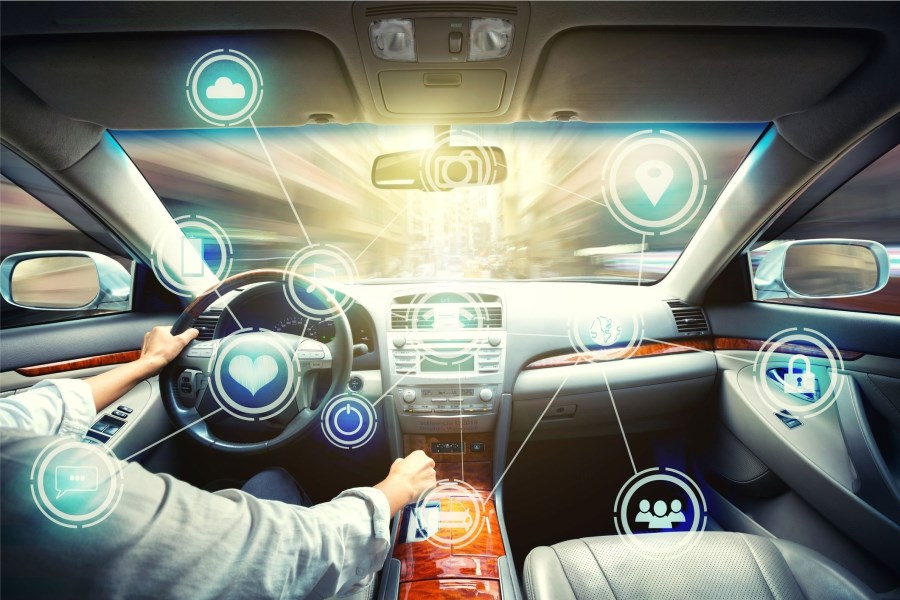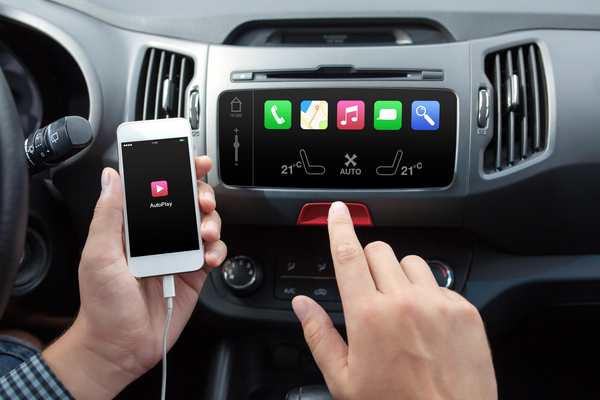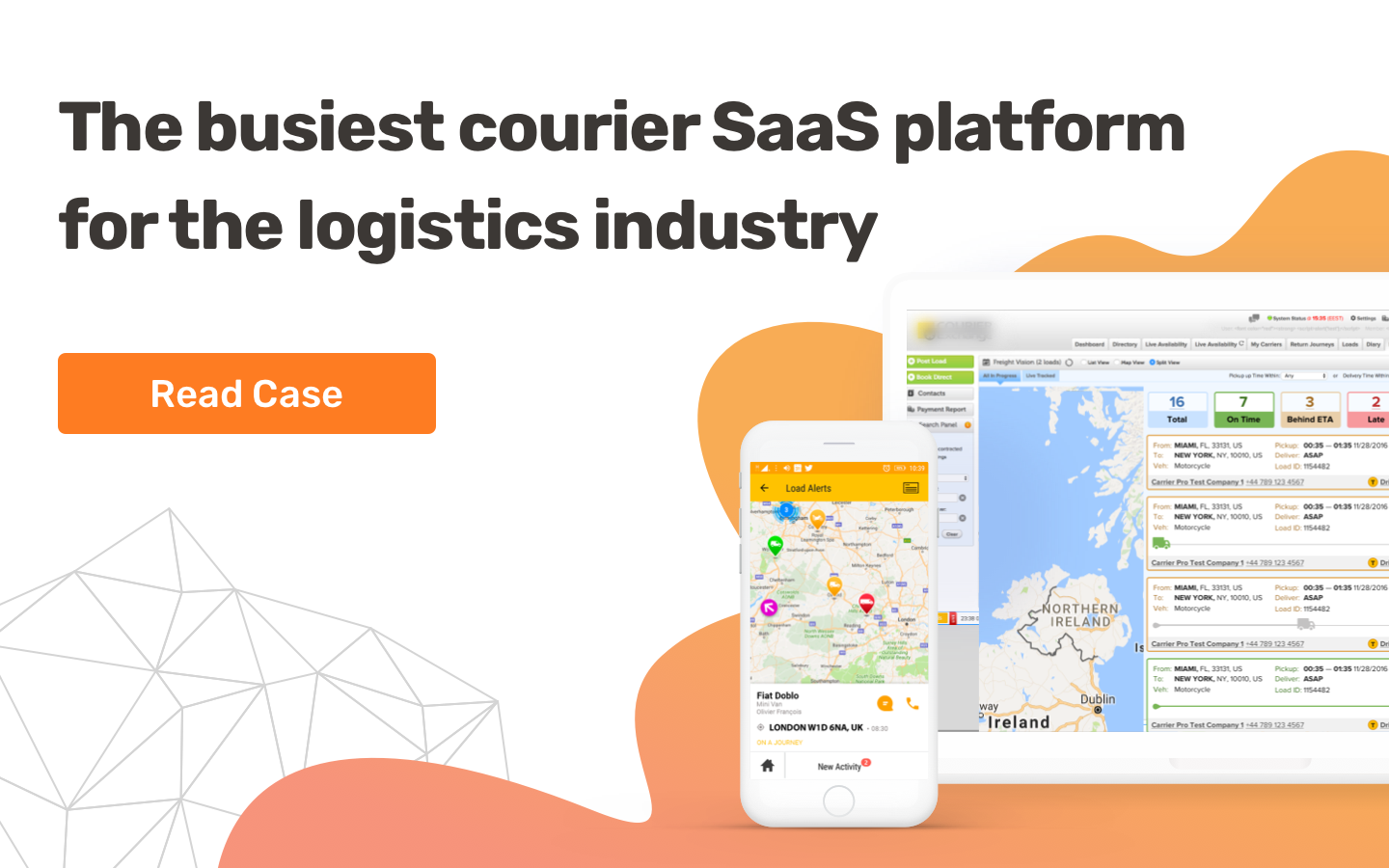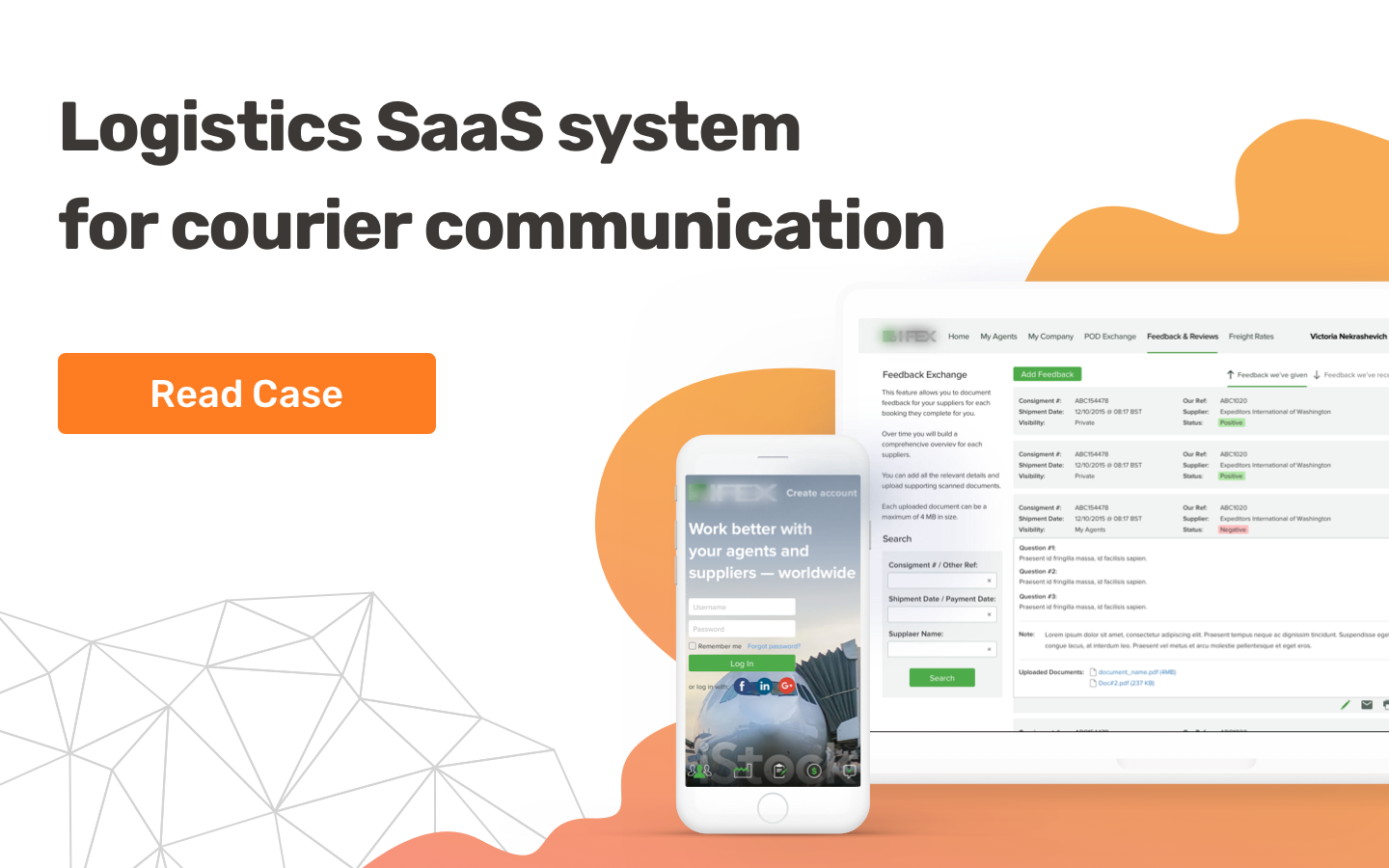10 Ways the Automotive Industry Сan Make Use of IoT Technology
The automotive industry has already begun to adopt the Internet of Things ✓ Here are 10 possible uses for IoT in the automotive industry.
Internet of Things solutions are changing our lives in wondrous and sometimes unexpected ways. With only a few clicks, users can get information about pump engine work-hours, control air temperature, or measure physical health indicators. Some of the main goals for using IoT in the automotive industry are:
- improving the quality of processes, services, and products
- reduction of financial losses and risks
- increasing the speed of cars production
- improving working conditions and employee safety
Let's go over 10 critical applications of IoT in the automotive industry.
The State of IoT in Automotive
The introduction of IoT in the automotive industry began along with the Internet. Since 1994, a computer diagnostics system has been embedded in cars, and since 2000, a USB-protocol and a Bluetooth communication channel have been added to cars.
All these implementations were aimed to create a smart car. Now the cars have the ability not only to stream music but also to warn other network members about road conditions or to signal SOS.
These days you can see how the Internet of Things has grown to influence the automotive industry:
- The estimated amount of money invested in automotive IoT is expected to reach $740 billion by 2025;
- By 2025, all new car models are expected to have IoT-connectivity;
- By 2023, car manufacturers will sell over 73 million connected car units;
- From 2017 to 2024, the Global Connected Cars market will be valued at $45.3 billion.
Internet of Things and Automotive: Top 10 Applications
Nowadays an ordinary car is equipped with a large number of various kinds of sensors, services, and devices that connect and work via the Internet. All these connections create a common network of IoT for automotive development. Here is a list of the most interesting applications of the Internet of Things in the automotive industry.
1. Predictive Maintenance for Car Repair
There are two common approaches to car maintenance: preventive and predictive. For example, when you understand that your oil or bearings will soon wear out, you go to the service station and do an inspection and replacement. This is preventative maintenance.
On the contrary, predictive maintenance, achieved through IoT for automotive service, is when the system monitors the status of parameters in the car in real time. Based on this data, the on-board system informs a driver when service is needed.
An example would be the level and purity of engine oil. Oil level and quality sensors respond to any changes in real time. As a consequence, the estimated date of the oil change is calculated through real indicators.
2. Commercial Fleet Monitoring
According to a Transparency Market Research report, such companies as IBM, Cisco, Intel, and AT&T are actively developing an IoT and automotive management network in order to get controlled data flows.
What did the fleet owners find from using IoT? Well, this is all about the control of the fleet and timely maintenance, or optimal calculation of the path. In addition, IoT provides an economic benefit due to the efficient distribution of vehicles, which increases the income of the fleet owners. The main advantages of using IoT in cars are:
- Optimized maintenance and logistics
- Ability to monitor driver performance and vehicle status for better safety and fuel consumption
- Scheduled preventative maintenance to improve vehicle valuation
3. Smart Infrastructure for Drivers
Cars are not the only part of the automotive industry to become a part of the Internet of Things. Roads and infrastructure are also connected to a common network to enhance interaction.
Some of the benefits of smart cities and other IoT technologies include:
- Traffic jams and congestion prevention
- Intelligent road lighting
- Smart parking management
- Network charging stations for electric vehicles
- Proper energy management
4. Communication Between Vehicles
Communication between vehicles, or V2V, is part of smart infrastructure technology. This is purposeful communication between all connected cars and IoT services.
What is the goal in creating V2V interaction? First, prevention of accidents. Vehicles share data about the speed, location, and route through a single network. Depending on how the logic of the system is arranged, either the driver can receive a warning about a possible emergency situation, or the system will take pre-emptive actions in the form of slowing down the car, which will protect from a collision. As an example, in the US, V2V technology is an important component in the intelligent transport system. This direction is funded by the US Department of Transport (DOT) and the National Highway Safety Administration (NHTSA) in order to broaden the use of driverless vehicles on the country's roads in the future.
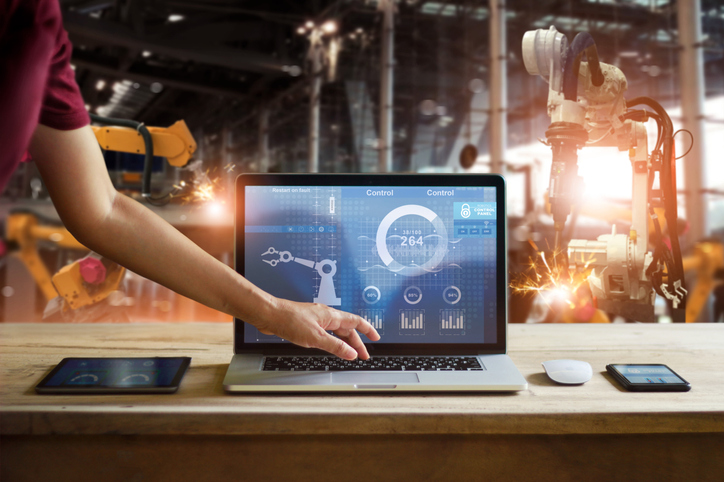
5. Improving car engineering and production timelines
Automotive industry and IoT influence each other, in addition to the favorable impact on infrastructure and interconnected facilities. The use of new technology allows them to meet the increasing market needs without changing traditional business goals. IoT has the greatest impact on such business components as: design ideas, the amount of services a company can provide, and income from the product life cycle.- Design ideas. Thanks to the ability to collect information on how a driver uses particular functions, it is possible to modify/improve or even remove them from the upcoming car design.
- Providing services. Using the capabilities of IoT, a manufacturer who previously had no interaction with the end user can now collect data on critical errors in the car system and provide support and important updates to a driver in real time.
- Product life cycle. Constant analysis of data that the manufacturer receives in real time, also allows a company to offer paid content to the end user. For example, infotainment applications that are based on the tastes of the customer.
6. Optimized Car Insurance
IoT is also widely used in insurance cases. The main value for the insurance company is that sensors can accurately track the condition of the car, the owner’s individual driving style, and other aspects that affect the condition of the car or driving safety. This data allows an insurance agent to more accurately charge for insurance, or in the case of an accident, better assess the damages and the cause of them.
For example, accident data used to be gathered only from the main sensors in the car, such as those showing the time gap between engine service. Now, manufacturers integrate sensors into the car salon in addition to the engine and mechanical units of the car. This allows them to collect information about the time of day when the insured event occurred, or the reasons for it.
In any case, the implementation of IoT technologies in insurance company business models will entail the development of this market segment and optimize the analysis of each insured event.
7. Car and Smartphone Integration
IoT has already proven itself to be best utilized in different areas of the automotive sector. Here are some of the most interesting applications for smartphones that are connected to the IoT in this area:- Predictive maintenance. With the help of feedback about the technical condition of the car received through the smartphone, users can solve problems with the technical units in the car before the emergency condition or before the appearance of these problems as such.
- Real-time monitoring. IoT allows us to exchange data between the manufacturer and car owners, or make maintenance decisions in real time through any mobile device. This speeds up the maintenance and production processes throughout the life cycle of the vehicle.
- Cognitive information to manage. The manufacturer can monitor all the connected vehicles directly via smartphone, as they are all in one network and always available for data transfer.
8. In-vehicle Infotainment
Google and Apple are working with automobile manufacturers to provide in-vehicle infotainment content. These two companies offer their products for the car infotainment systems. For example, Google embeds such services as GoogleMaps, Google Play Store, Google Assistant, Apple introduced Apple Carplay.
At the moment, these services work only when the user confirms the connection of these applications via a smartphone with access to the Internet. These applications are scheduled to run autonomously in the future.
9. Driver’s Condition Monitoring
IoT also uses data from car sensors to collect information about driving style. All this data is collected so that the system can predict the actions of the driver to provide additional protection while driving. Plus, such information may be needed for insurance companies that can recalculate the individual cost of insurance.
One automotive supplier, Faurecia, presented an active wellness seat for monitoring drivers’ heart rate and breathing rhythm. The seat monitors the physical and mental status of drivers and passengers and can alleviate drowsiness or stress.
Faurecia’s Active Wellness 2.0 includes an expanded range of behavioral and biological data including temperature, humidity, eye gaze, facial expression, body movement, and more. This seat predicts the driver’s behavior and informs them about the need to stop and rest, avoiding dangerous situations on the road.
Another project, Harken, is focused on developing special materials and sensors for better monitoring mechanical and physiological activities. Measuring cardioactivity is made by ballistocardiography (BCG). It’s different from the classic ECG waveform and measures the blood flow mechanically driven by the heartbeat. The Harken project includes embedding sensors in the car seats and seat belts for full monitoring.
10. Equipment Theft Detection During Car Manufacturing
In addition to monitoring the state of the car and the surrounding infrastructure, there is a need to monitor the state of the equipment during the car manufacturing process.
In the workplace, there are situations of theft of equipment. RFID tags can determine what equipment was stolen and when it happened. With the help of IoT, it is possible to track where the equipment is now in real time. Such implementation allows you to keep track of the equipment on the balance sheet, check for its presence, search, and in case of theft, even bringing to justice the person who committed the theft.
Our experience
As a software development company, we specialize in the development of complex solutions such as applications for the automotive industry. Automotive companies that plan to deploy IoT applications should consider global connections between cars, smart cities, and more.
The automotive industry is better to develop on a small scale before deploying it for global applications. Be sure to determine the criteria that you want to implement in your car production.
When using the Internet of Things for the automotive sector, take your direction into account. This may be the production of cars, or insurance, or condition monitoring. Depending on the chosen direction, you will need an individual approach to data analysis, which our company will help you to implement.
Final thoughts
The wide range of impacts of IoT to the automotive industry shows how this technology will expand in the coming years into more and more ways of application. The volume of data received by car manufacturers, third-party analytical companies, or insurance companies is growing rapidly.
This helps to make optimal and effective decisions in the production of cars - for example, to remove unnecessary functionality that is not used by a consumer, or ensuring safety protocols depending on driving style and traffic situation.
There are many ways to implement IoT in the automotive industry. And not only with ease and entertainment, but more importantly, safety and drivers’ comfort. With the expanding of IoT services, fully unmanned vehicles could reasonably become a reality very soon, thanks in part to the great interest of big IT companies in this sector.
By opting to work with Ardas IT, you will be able to take your product or services to the next level. Our team is equipped with professionals who are experienced in SaaS development, QA, BA, and IoT. With Ardas IT, you can take a qualitative step forward in the cost and quality of services you offer, which will definitely be noticed by your potential customers!
